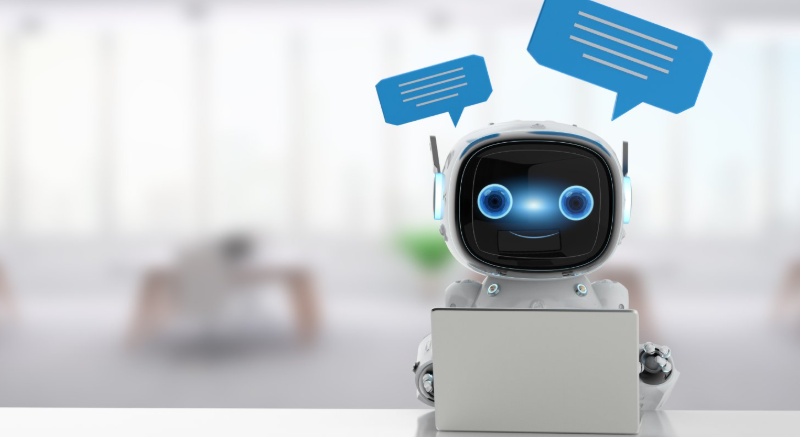
Tired of your current phone's limitations? Wondering if the buzz around “AI Phones” is just hype or the next big leap?
What You'll Learn:
- The fundamental differences between AI Phones and traditional smartphones.
- Key concepts and technologies driving AI Phone innovation.
- Practical implementation strategies and best practices for leveraging AI Phone capabilities.
- The tangible benefits and measurable results of adopting AI Phone technology.
Understanding AI Phone vs. Smart Phone
The lines between a “smartphone” and an “AI Phone” are blurring, but in 2025, the distinction is becoming clearer, driven by advancements in artificial intelligence and on-device processing. A traditional smartphone excels at running applications and connecting users to information and services. An AI Phone, however, goes a step further by integrating AI capabilities deeply into its core functions, enabling proactive assistance, hyper-personalized experiences, and advanced computational tasks.
AI Phone vs. Smart Phone Fundamentals
At its core, a smartphone is a mobile device that combines cellular and mobile computing functions into one unit. It typically features a touchscreen interface, internet access, and the ability to run various applications. Think of it as a powerful, portable computer.
An AI Phone, on the other hand, is a smartphone that has been specifically engineered to harness the power of artificial intelligence, often with dedicated AI hardware (like NPUs – Neural Processing Units) and sophisticated software. This allows it to perform tasks that were previously impossible or required cloud processing, such as:
- On-device natural language processing: Understanding and responding to voice commands more accurately and privately.
- Predictive assistance: Anticipating user needs and offering relevant information or actions before being asked.
- Advanced computational photography: Enhancing images and videos with AI-driven scene recognition, object detection, and intelligent editing.
- Personalized user experiences: Adapting the interface, app suggestions, and even system behavior based on individual usage patterns.
“The future of mobile isn't just about more power; it's about more intelligence. AI Phones represent the first wave of devices that truly understand and adapt to their users.” – Tech Analyst, TechCrunch
Key Concepts
Several key concepts differentiate AI Phones from their predecessors:
- On-Device AI: This is perhaps the most significant differentiator. Instead of relying solely on cloud servers for AI processing, AI Phones perform many AI tasks directly on the device. This leads to faster response times, improved privacy, and functionality even without an internet connection. Explore the fundamentals of on-device machine learning on developer.mozilla.org.
- Neural Processing Units (NPUs): Many AI Phones feature dedicated hardware accelerators designed to efficiently handle AI and machine learning workloads. These NPUs are optimized for tasks like matrix multiplication and deep learning inference, making AI features run smoother and consume less power.
- Contextual Awareness: AI Phones are designed to be more contextually aware of their surroundings and the user's current activity. This allows for more intelligent notifications, task automation, and personalized recommendations.
- Proactive Intelligence: Unlike traditional smartphones that wait for user input, AI Phones can proactively offer assistance. This might include suggesting the best route to a meeting based on real-time traffic or offering to silence notifications during a detected “do not disturb” period.
Here's a simplified comparison:
| Feature | Traditional Smartphone (2024) | AI Phone (2025) |
|---|---|---|
| Core Function | Communication, Apps, Information Access | Communication, Apps, Information Access, Proactive Assistance, Personalization |
| AI Processing | Primarily Cloud-based | Significant On-Device Processing with Cloud Augmentation |
| Hardware Focus | General-purpose CPU/GPU | Dedicated NPUs for AI tasks |
| User Interaction | Reactive (responds to user commands) | Proactive and Reactive (anticipates needs and responds to commands) |
| Personalization | Basic (app preferences, settings) | Deeply Personalized (adapts interface, suggestions, behavior) |
| Privacy | Relies on cloud provider's policies | Enhanced privacy due to on-device processing |
AI Phone vs. Smart Phone Implementation
The shift to AI Phones isn't just about the hardware; it's about how these devices are used and the new possibilities they unlock. Implementing AI Phone features effectively requires understanding their capabilities and integrating them into daily workflows.
Getting Started
Adopting an AI Phone involves more than just purchasing a new device. It's about exploring its intelligent features:
1. Explore On-Device AI Features: Familiarize yourself with the AI-powered tools already built into your device. This could include advanced voice assistants, intelligent camera modes, or predictive text enhancements. Many of these capabilities are detailed in manufacturer documentation, similar to how web technologies are documented on reactjs.org.
2. Enable Personalized Experiences: Grant necessary permissions for the AI to learn your habits and preferences. This allows the phone to offer truly personalized suggestions and automate tasks.
3. Experiment with Proactive Assistance: Pay attention to when your AI Phone offers suggestions or takes actions automatically. Understand what triggers these responses to better leverage them.
4. Utilize AI-Enhanced Apps: Many existing apps are being updated to take advantage of AI Phone capabilities. Look for apps that offer intelligent features like smart photo organization, AI-driven productivity tools, or adaptive learning platforms. You can find many AI-related projects and discussions on github.com.
Best Practices
To maximize the benefits of an AI Phone, consider these best practices:
- Prioritize Privacy Settings: While on-device AI enhances privacy, it's still crucial to manage app permissions and understand what data is being collected. Review your device's privacy settings regularly.
- Provide Clear Feedback: When the AI makes a mistake or offers an unhelpful suggestion, provide feedback if the system allows. This helps the AI learn and improve its accuracy over time.
- Integrate with Other Smart Devices: AI Phones can act as central hubs for your smart home ecosystem, orchestrating actions and providing intelligent control.
- Stay Updated: Manufacturers are continuously rolling out software updates that enhance AI capabilities and introduce new features. Ensure your device is always running the latest version to benefit from these improvements. For general software development best practices, resources like nodejs.org can offer valuable insights.
- Understand AI Limitations: While powerful, AI is not infallible. Be aware that AI Phone features are constantly evolving and may still have occasional errors or biases. Consulting resources like w3.org can help understand the underlying principles of intelligent systems.
AI Phone vs. Smart Phone Benefits and Results
The adoption of AI Phones promises significant improvements in user experience, productivity, and efficiency. The benefits extend beyond mere convenience to tangible, measurable outcomes.
Expected Outcomes
Users can expect a more intuitive and seamless interaction with their mobile devices. This includes:
- Enhanced Productivity: AI can automate mundane tasks, manage schedules intelligently, and provide contextual information to help users make faster, better decisions.
- Improved Communication: Advanced natural language processing means more accurate voice commands, better translation services, and more intelligent message drafting.
- Superior Photography and Videography: AI-powered image processing can elevate mobile photography to professional levels, automatically adjusting settings and enhancing shots in real-time.
- Hyper-Personalized Experiences: From app suggestions to content recommendations, AI Phones tailor the user experience to individual needs and preferences, making the device feel uniquely yours.
- Increased Accessibility: AI features can significantly improve accessibility for users with disabilities, offering advanced voice control, image descriptions, and other assistive technologies. You can learn more about accessibility standards at w3.org/WAI/.
“The AI Phone is set to redefine personal computing. It's moving from a tool we command to a partner that assists us.” – Industry Analyst, The Verge
Success Metrics
Measuring the success of AI Phone implementation can be done through several metrics:
- Time Saved: Quantify the reduction in time spent on routine tasks due to AI automation.
- Task Completion Rate: Track the success rate of AI-assisted tasks, such as scheduling meetings or finding information.
- User Satisfaction Scores: Gather feedback through surveys and reviews to gauge user sentiment regarding the AI features and overall experience.
- Engagement with AI Features: Monitor how often users interact with and benefit from the AI-powered functionalities.
- Accuracy of AI Predictions/Suggestions: Measure the precision of AI-driven recommendations and proactive assistance. For data on technology adoption trends, Statista provides valuable insights.
- Reduced Error Rates: Observe a decrease in user errors when performing tasks with AI assistance.
Here's a comparison of potential outcomes:
| Area of Impact | Traditional Smartphone Impact | AI Phone Impact |
|---|---|---|
| Task Automation | Manual execution of most tasks | Significant automation of routine tasks (scheduling, reminders, data entry) |
| Information Access | User-initiated searches and browsing | Proactive delivery of relevant information based on context and learned preferences |
| Photography | Manual camera settings, basic filters | Intelligent scene recognition, advanced editing, AI-generated enhancements |
| Personalization | Basic app settings, theme customization | Deeply adaptive interface, content, and feature suggestions |
| User Effort | Requires significant user input and decision-making | Reduces user effort through anticipation and intelligent assistance |
| Learning Curve | Moderate to high for advanced features | Potentially lower for core AI features due to intuitive design, but deeper features exist |
By focusing on these areas, individuals and businesses can effectively evaluate the value and impact of transitioning to AI Phone technology. For developers looking to build AI-powered applications, resources like python.org offer a starting point.
FAQ (Frequently Asked Questions)
Q: Are AI Phones just smartphones with a fancy name?
A: While AI Phones are built upon smartphone technology, they represent a significant evolution. The key difference lies in the deep integration of dedicated AI hardware (NPUs) and sophisticated on-device AI processing, enabling capabilities like proactive assistance, hyper-personalization, and advanced computational tasks that go beyond what traditional smartphones can achieve.
Q: Will AI Phones replace traditional smartphones entirely in 2025?
A: In 2025, AI Phones will likely become the dominant high-end and mid-range offering, pushing traditional smartphones to the budget segment. While traditional smartphones will still exist, the innovation and advanced features will be concentrated in AI-powered devices. Many users will naturally upgrade as AI capabilities become indispensable.
Q: Is my data safe on an AI Phone, especially with on-device processing?
A: On-device AI processing generally enhances privacy because sensitive data doesn't need to be sent to the cloud for processing. However, it's crucial to manage your device's privacy settings, understand what data is being collected, and review the privacy policies of any apps you use. Resources on data privacy can be found on government sites like usa.gov.
Q: How do I know if my current phone can be upgraded to have AI Phone capabilities?
A: Most traditional smartphones cannot be upgraded to “AI Phone” status through software alone. The core differences lie in dedicated AI hardware (NPUs) and specialized architecture. While software updates can improve AI features on existing devices, they won't replicate the full capabilities of a purpose-built AI Phone. To explore AI development, you might find resources on freecodecamp.org useful.
Q: What are the most noticeable benefits of using an AI Phone in daily life?
A: The most noticeable benefits include significantly faster and more intuitive voice assistant responses, proactive suggestions that anticipate your needs (e.g., traffic alerts before you leave), enhanced camera performance with intelligent scene recognition, and a user experience that feels more tailored to your individual habits and preferences.
The evolution from smartphones to AI Phones marks a pivotal moment in personal technology. By prioritizing on-device intelligence, dedicated hardware, and proactive assistance, AI Phones are poised to deliver a more intuitive, personalized, and efficient user experience. While traditional smartphones have served us well, the future clearly lies in devices that can truly understand and adapt to our needs.
Ready to experience the future of mobile? Explore the latest AI Phone models and discover how intelligent technology can transform your daily life. Leave a comment below with your thoughts on the AI Phone revolution!







